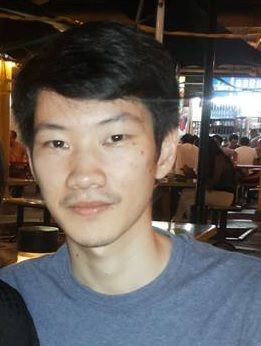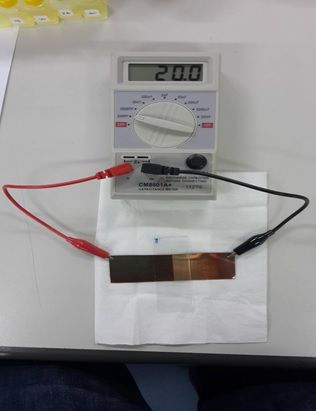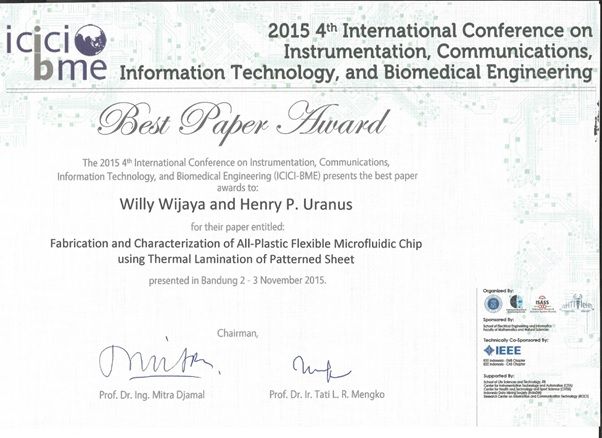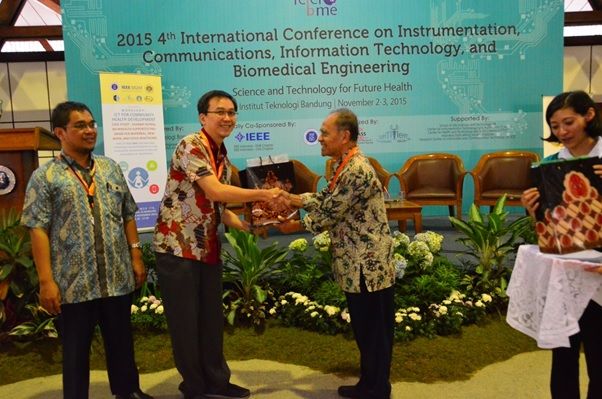UPH’s Electrical Engineering Student got the Best Paper Award in an International Conference (ICICI-BME 2015)
Lab on a chip (LoC) is a device which integrates the function of a bio-chemical laboratory into a single chip, with automated process and detection under electronic control. The microfluids which flow within tiny channels in the chip are analyzed biochemically for certain purposes, e.g. for biomedical, food safety, or environmental analysis. LoC is commonly found in a form of chip with thin glass, silicon, or plastics like PDMS (polydimethylsiloxane). Processing technology for fabrication of such chips usually need cleanroom technology, which is not available in Indonesia.


The fabricated microfluidic chip. Left: a Y-serpentine microfluidic channel, Right: a microphotograph of the channel which shows relatively smooth channel walls.

Willy Wijaya, UPH’s Electrical Engineering cohort 2010 student. A paper based his undergraduate thesis work was awarded as best paper in The 4th International Conference on Instrumentation, Communications, Information Technology, and Biomedical Engineering, 2- 3 November 2015.
In his undergraduate thesis work, Willy Wijaya, a student of Department of Electrical Engineering UPH of cohort 2010 under the supervision of Dr. Henri Uranus performed research on fabrication ofall-plastic flexible microfluidic chip for LoC with affordable thermal lamination of patterned plastic sheet. For this work, the team used stationery plastic sheets which are widely available in local stationery shops and use simple process technology that does not need cleanroom facility. Despite of the limitation, they successfully made cross-shaped channel and Y-serpentine channel. The chip has a footprint of 7.6 cm in length and 2.5 cm in breadth, having average channels’ width of 226μm and average thickness of 137μm. They also successfully demonstrated the functionality of the chip through electro-osmotic flow, where the fluid is controlled to move by high voltage DC electricity. Moreover, they also managed to add metal electrodes into the chip in order to have a built-in capacitive sensor and demonstrate the application of the chip to evaluate the quality of commercial palm cooking oil after being heated for normal use. Since the chip is made of thin plastic sheets, it has high flexibility, a feature which is suitable for wearable sensing applications.


Left: An LoC furnished with capacitance sensor was used for observing changes in dielectric constant of used palm cooking oil. Right: Flexibility of the chip is a useful feature for wearable sensor applications in the future.
The work was written into a paper which was presented in The 4th International Conference on Instrumentation, Communications, Information Technology, and Biomedical Engineering (ICICI-BME 2015) organized by ITB, IBES (Indonesian Biomedical Society), ISASS (Indonesian Sensor and Actuator System Society), and IEEE Indonesia EMB (Engineering in Medicine and Biology) Chapter, and IEEE Indonesia CAS (Circuits and Systems) Chapter on 2-3 November 2015 in ITB Campus, Bandung, Indonesia. Since Willy already work after his graduation in a telecommunication supplier company, he cannot attend the conference. Dr. Henri Uranus, as the corresponding author, presented the paper in the conference.

The best paper award
After evaluation onto around 100 papers accepted for the conference, the paper of Willy Wijaya was awarded by the referees as the best paper together with another paper from ITB. The award certificate was handed by Prof. S. Soegijoko, the president of the IEEE Indonesia EMB Chapter to Dr. Henri Uranus at the closing ceremony of the conference.

Prof. Soegijoko from IEEE Engineering in Medicine and Biology Indonesia Chapter handling the award certificate to Dr. Henri Uranus.
The video of the work of Willy Wijaya was available in http://ee.fast.uph.edu/video/highlight/27-student-project-flexible-loc.html. For other works of student and lecturer of Electrical Engineering UPH, please visit http://ee.fast.uph.edu.
ACTIVITIES
